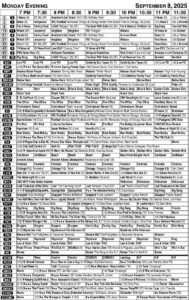Feeding the birds
With thousands of summer birds flocking south for the winter, it is time to consider a new hobby — feeding the birds. I grew up feeding birds, so I can appreciate the fun and the responsibility of caring for birds that stay here with us through the cold winter months. I will take you, step-by-step, through the supplies, literature and routines of bird feeding.
Start with a feeder. This should be rather large to accommodate the crowds coming in the midst of the cold, snowy days. This will need cleaning periodically to make sure the food is fresh. It can be wood or plastic, as long as it can be washed.
Now we will look at the seed. Many stores offer mixed seed for birds, and we are going to break down these choices based on bird favorites, healthy choices and cost. The number one choice for birds is black oil sunflower seeds. These seeds are easy to open to get the rich kernels. They are the favorite seed choice of many birds. They are rich in oil (to give calories and keep body temperature up) and give energy. The hulls can be messy, and you can buy the seed already hulled for additional cost. Blue jays, chickadees, titmice and nuthatches prefer sunflower seeds.
Striped sunflower seeds are second. They are less expensive, larger and popular with blue jays and cardinals. These have messy hulls as well.
White proso millet is a small round cream-colored grain that ground birds enjoy. This would be juncos, sparrows, and doves, but other birds will eat them. Their hulls are seldom even seen, as they are ground up in the birds’ gizzards. This seed is commonly used as a filler.
Black niger thistle seed is small and needs a special feeder, but birds, especially the finches, love it. Hang this feeder high as deer love it as well. Goldfinches (though in winter color), purple finches and house finches will stay in your yard to gobble up this seed.
Milo is a larger red brown seed used as filler in bird seed mixes. Birds do not eat it, and it is therefore a waste. Other seeds added to mixes are peanuts (whole or shelled), cracked corn (loved by many birds), and other nuts and berries.
One of the best, most economical types of bird food is the bird cake. They are made with suet or lard, or another form of solid fat, and / or peanut butter, or shelled peanuts, berries, seeds and mealworms.
As long as birds can find seeds, berries and worms to eat, they will not come to your feeder. When food and water get scarce, they will flock to your feeder. Have fun identifying all the different kinds you have!
Hughes is an Ohio State University Extension Master Gardener Volunteer in Mahoning County.

